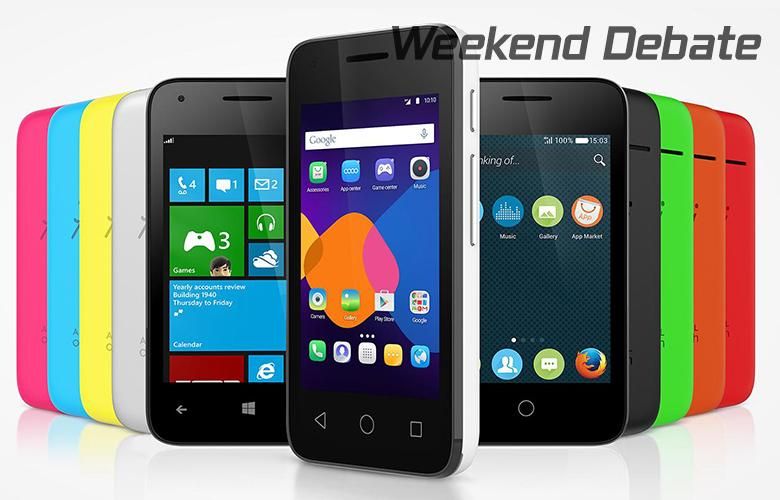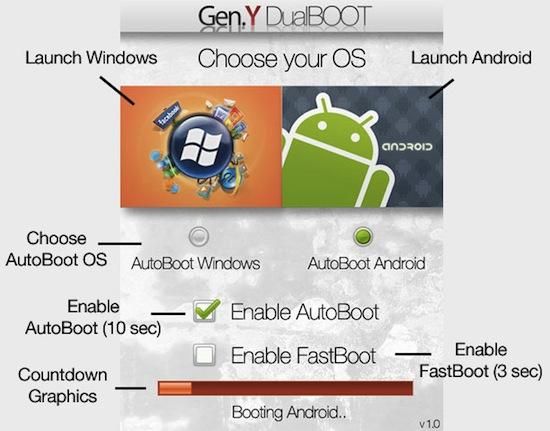There has been a lot of talk of late about phones that can have different operating systems on them. In most cases, these different operating systems are put on by the manufacturer and purchased as a Windows Phone, or an Android Phone, or in some, extremely rare cases, a Firefix Phone. But that has naturally brought up the idea of a user running multiple platforms on a single device.
To clarify, this debate is not about whether an OEM should build a phone that could support multiple OS’s, much like some editorials have suggested of HTC. That just makes business sense. If you can have the same hardware serving different market segments, you have a home run and you should just keep hitting them. Rather, we’re discussing the topic that often comes up in the comments of those articles – either dual booting, or flashing new ROMs as whimsy would have it.
Nothing new
Dual-booting an OS is not a new concept, though it’s a little on the new side for phones. But PC’s have been dual booting for some time now – PC’s that run Linux, Macs that run Windows, you name it. So when the concept of phones that would run multiple platforms came out, it seemed like a debate-worthy topic.
Some are not so sure what is so attractive about dual-booting – whether it’s a phone or a PC. Hardware is designed for a purpose and putting bunny ears on a donkey ain’t gonna make it hop, as the saying goes. It goes like that, right? Anyway.
Too much hassle
To some it almost seems comical to put a different OS onto a piece of hardware for which it wasn’t designed. The thinking is, if you wanted a Windows 8 PC, why didn’t you just buy a Windows 8 PC instead of a Macbook. There are some niche cases where having multiple OS’s on a single box is desireable. A Q/A analyst at my day job for example runs Windows on a Macbook because he has to test both operating systems, and only wants to take one device home with him. Ok, that makes sense.
But to someone who doesn’t have to do that, rebooting your machine just so you can switch from Keynote to PowerPoint seems to be missing the point. Doing it on a phone seems even worse. Try to imagining a world in which you run Windows Phone most of the time, but reboot the whole device every time you want to use Hangouts. Go ahead and try. Now take an Excedrin and the headache will pass.
Doing things that way just doesn’t seem like the best way to use a phone. Maybe that’s missing the point a bit, but a phone should be bought because it works for you. It should work without having to compromise. Shutting down every time you want to post a photo to Instagram seems a lot like a compromise to me. It sours the user experience.
And yet…
If you have a phone that can physically handle either OS, why not give the user that choice? It’s just software. Assuming licensing issues can be worked out, why not just send a MicroSD card with whatever software the phone can handle inside the box? Too cheap for that? Make them downloadable. If a user really wants to have that choice, why not give it to them?
Of course, there may very well be some licensing issues involved. Microsoft may not want to have downloads of its OS floating around virtually uncontrolled. But there’s probably ways to ensure that wouldn’t happen. Product keys if you will. But that’s something for folks in a board room to figure out. We’re not going to let a silly thing like logistics get in the way of a lively debate right?
To each their own
Dual-booting would certainly be a fringe case, but if someone wants to experience Android for some time and then gets a hankering for Windows Phone, that’s certainly a reasonable scenario. Why not give a user the flexibility of running a favorite operating system on one side, while switching to the other to get those tasks done that Android does better. For example, I could run Windows Phone most of the time, but if I need to Hangout with a Pocketnow Staffer, or I’m planning a nice night of geocaching, I can switch over to Android lickety split.
What about flashing different operating systems onto the same phone? It’s not that crazy a situation. It’s not unlike something many tech reviewers handle on a regular basis – setting up a new phone with all their apps, contacts, etc. We do it because it’s our job, but if a user wants to do that, more power to them. It would likely involve erasing the entire phone, and making them incommunicado for a couple of hours, but when they’re done, they get a nice new operating system to play with. Nothing wrong with that.
So, there is a persuasive argument for buying one phone and getting two (or more) operating systems to play with. Whether you are dual-booting, or flashing a new OS as flights of fancy take you, there’s no reason not to have that option.
What do you think? Would you even want to dual boot, or have the option of putting a new OS on a new device? Or are you more of a meat-and-potatoes, just give me the phone I ordered type of person? Go ahead and hit us up in the comments and let’s see if we can figure this out.



